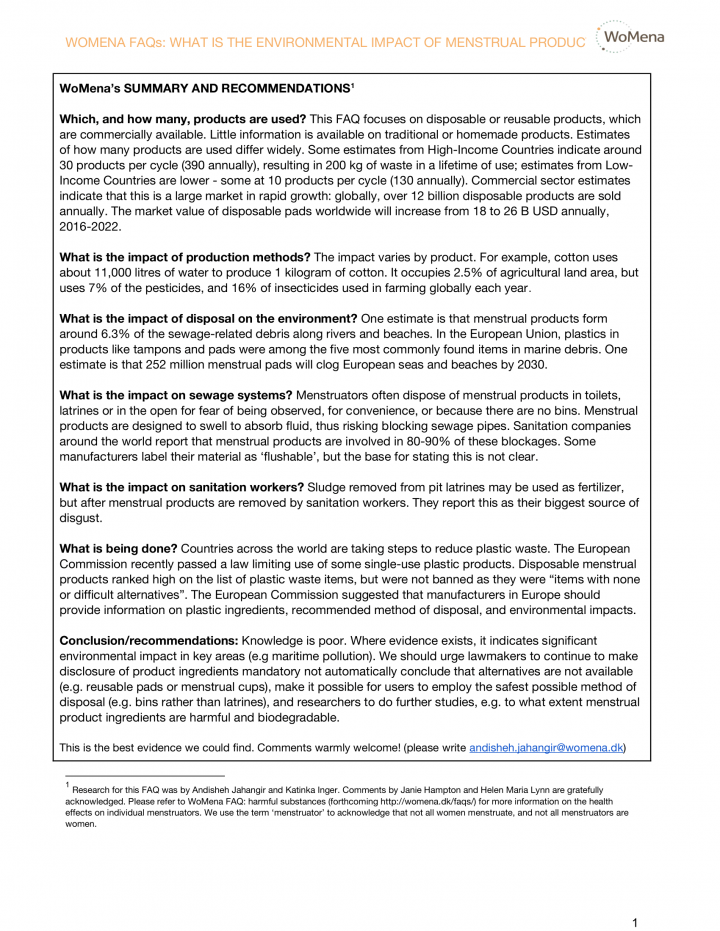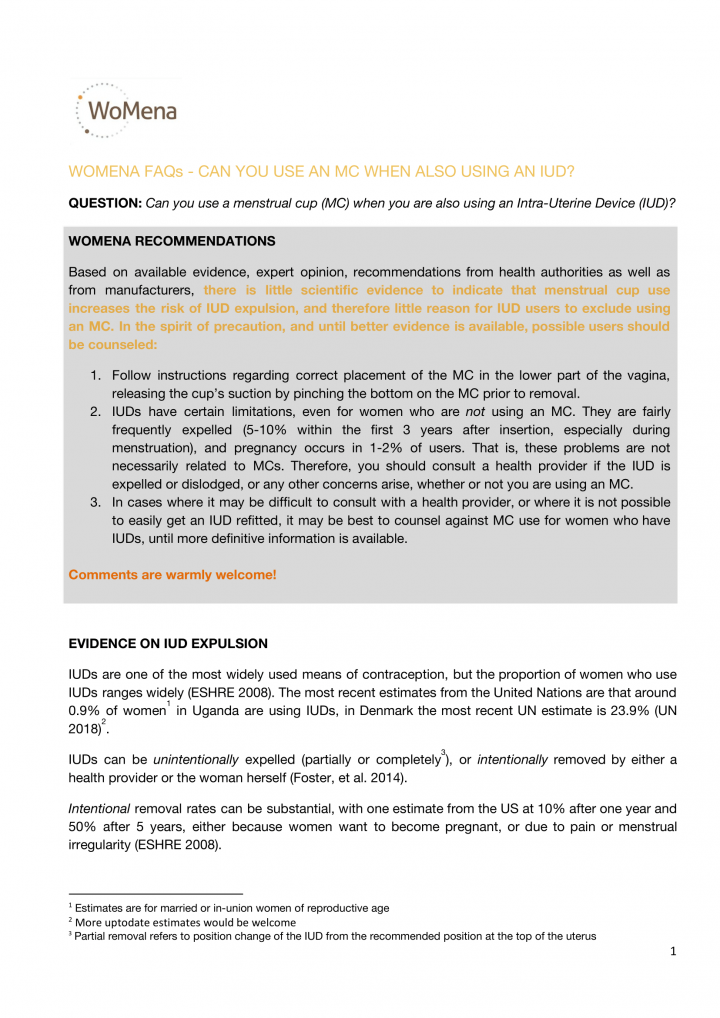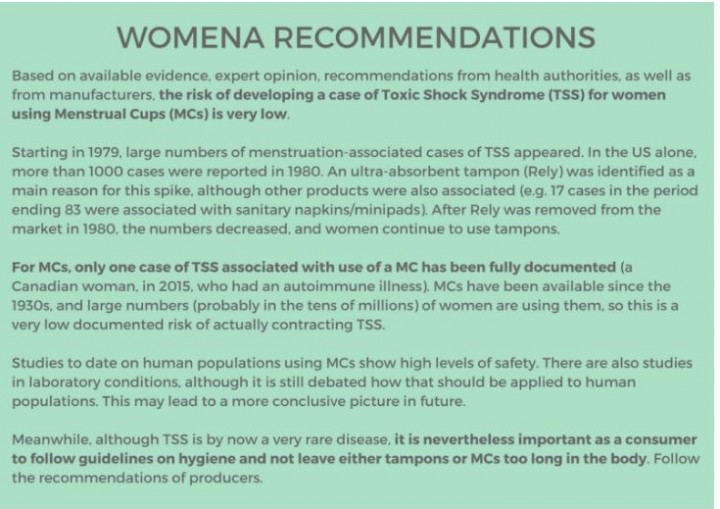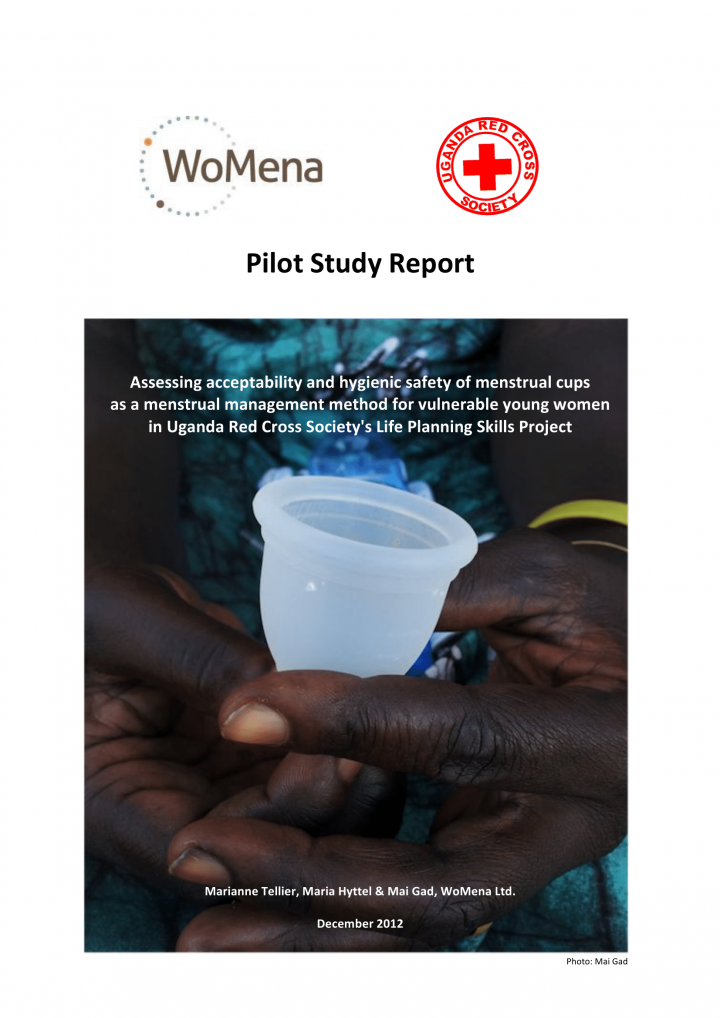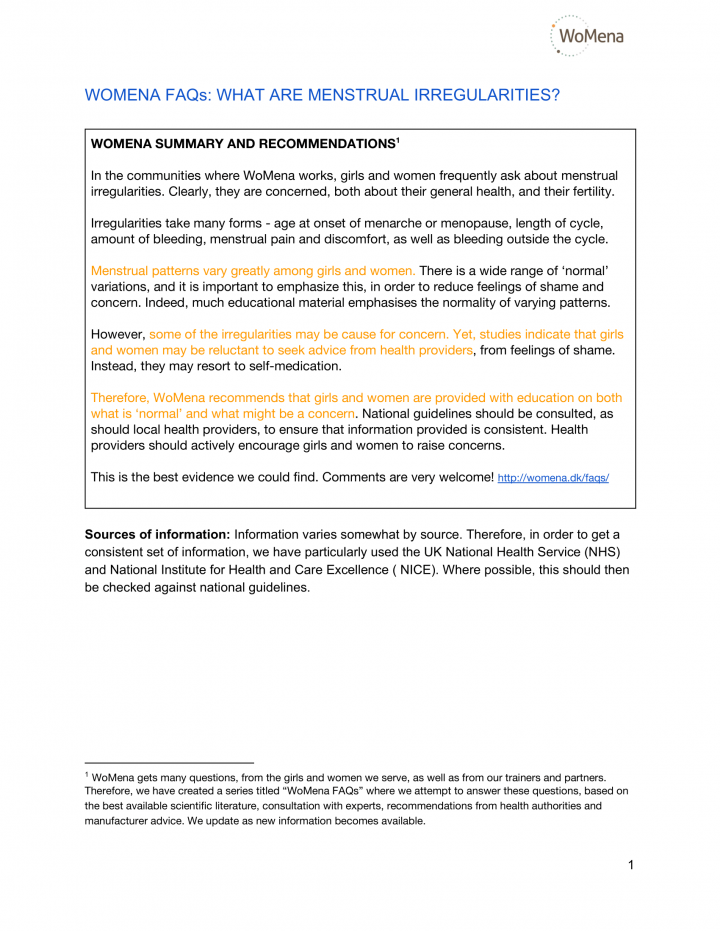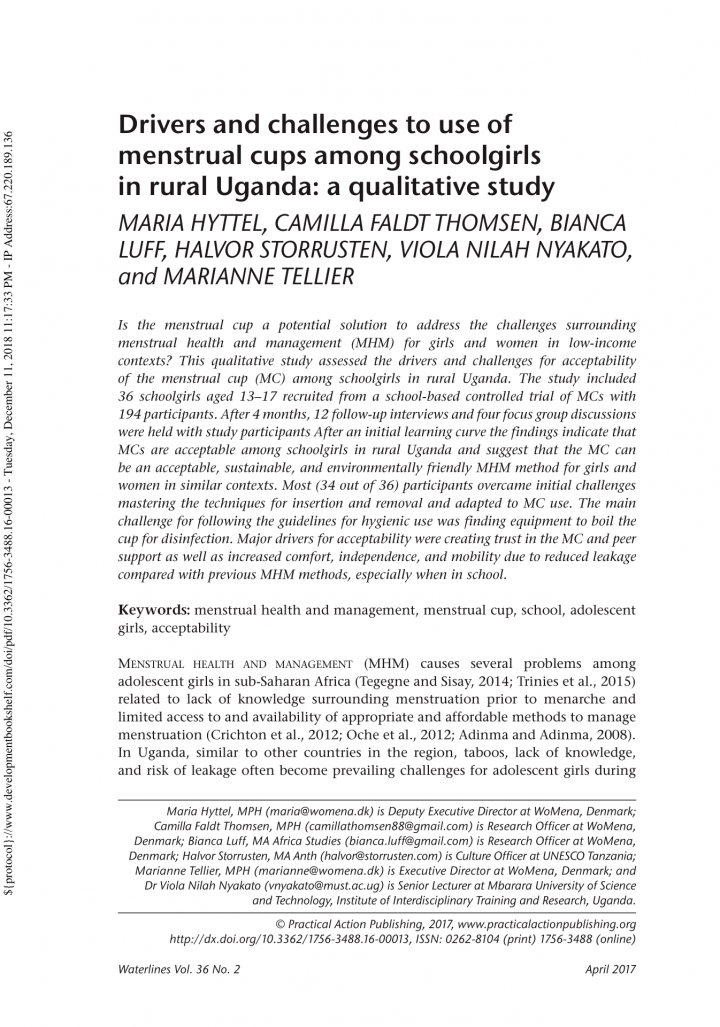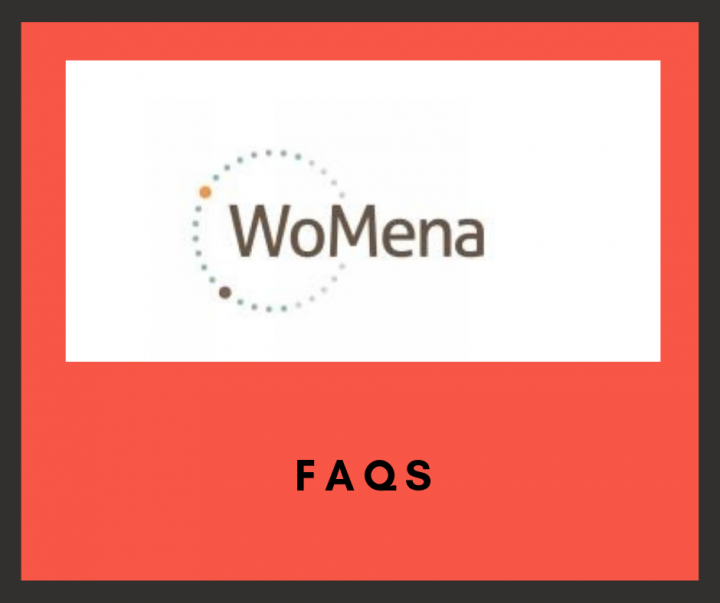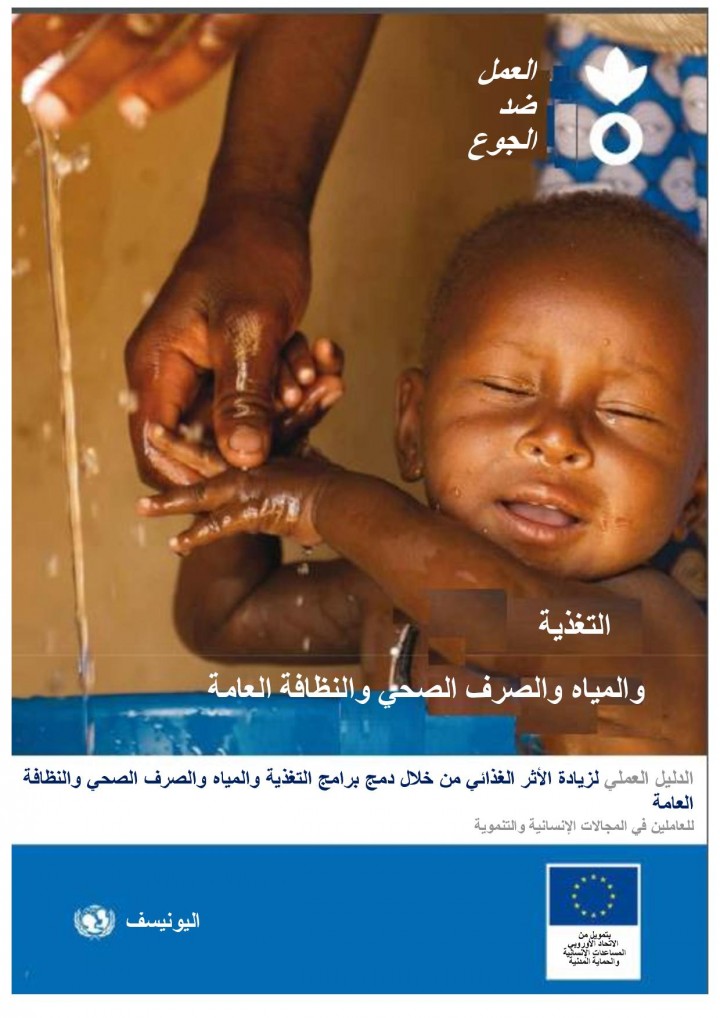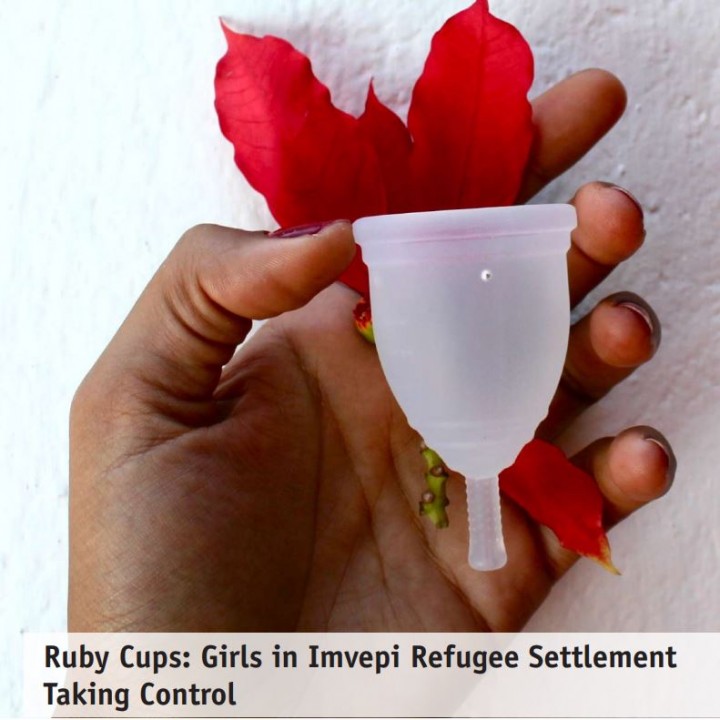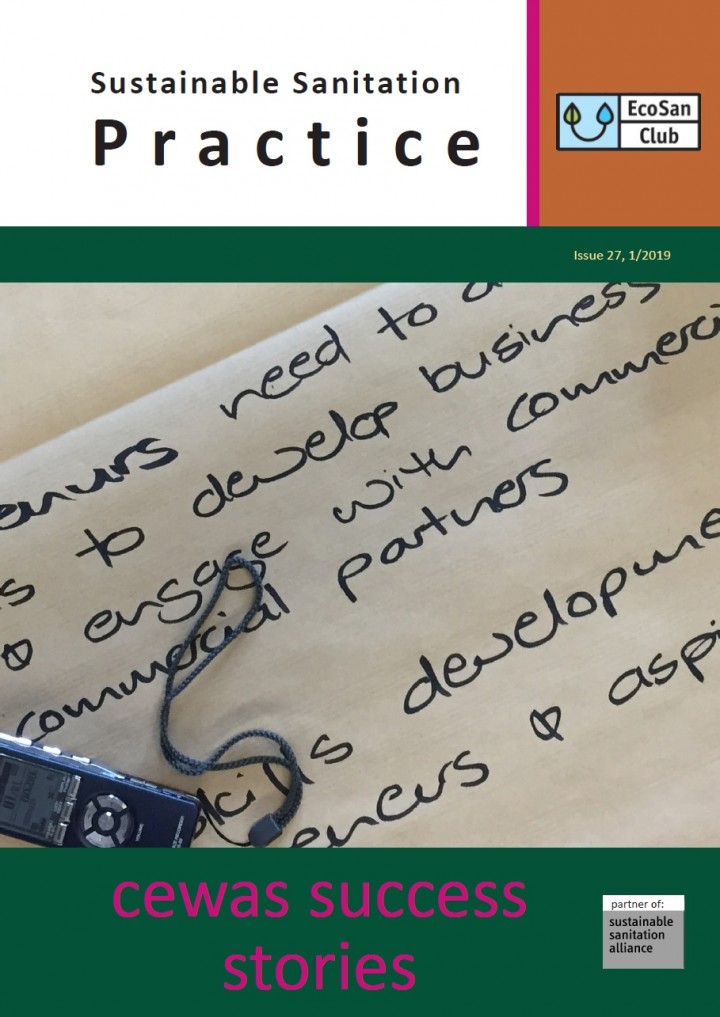Searching for information on Sanitation Workers?
The Sanitation Workers Knowledge + Learning Hub is the best source for all current news, trends, articles and updates on sanitation workers rights around the world.
Wherefrom do we get data on the sanitation status in cities and countries and what qualities do these data need to have to be relevant either for JMP reporting or to be used in developing an SFD for a given city?
Against this background, the comparison of methods for excreta flow analysis gives an overview on the focus, purpose, methodologies, outputs and definitions of two approaches. On the …
Recordings and presentation for the webinar jointly hosted by SuSanA, WHO and NNN on the new ‘How to’ guide for NTD programmes: “WASH and Health working together: a practical guide for NTD programmes."
Presentation held by Sophie Boisson (WHO), Leah Wohlgemuth (NNN) and Yael Velleman (Schistosomiasis Control Initiative)
WoMena’s SUMMARY AND RECOMMENDATIONS
Which, and how many, products are used?
This FAQ focuses on disposable or reusable products, which are commercially available. Little information is available on traditional or homemade products. Estimates of how many products are used differ widely. Some estimates from High-Income Countries indicate around 30 products per cycle (390 annually), …
WOMENA RECOMMENDATIONS
Based on available evidence, expert opinion, recommendations from health authorities as well as from manufacturers, there is little scientific evidence to indicate that menstrual cup use increases the risk of IUD expulsion, and therefore little reason for IUD users to exclude using an MC. In the spirit of precaution, and until better evidence is available, possible users …
WOMENA RECOMMENDATIONS
The risk of developing Toxic Shock Syndrome (TSS) for women using Menstrual Cups (MCs) is very
low.
In 1979-80, large numbers of menstruation-associated cases of TSS appeared. In the US alone, more than 1000 cases were reported in 1980. An ultra-absorbent tampon (Rely) was identified as a main reason for this spike, but many other products were also associated, for …
Study objectives: The objectives of this study were to assess young girls and women’s acceptability, suitability and hygienic safety of using menstrual cups in Uganda, when introducing cups through the Uganda Red Cross Society (URCS) Life Planning Skills (LPS) project framework. In the long-‐term, this is intended to support the formulation and implementation of policies and programs aimed …
Kasungu municipality is approximately 130 kilometres north-west of the capital of Malawi, Lilongwe. It has a total population of 77,619. The population swells up during the day, except on Sundays when most shops are closed. The municipality has a high population density of 2,188 people per square kilometre. The majority of the residential areas are informal settlements, which occupy 64 percent of …
Itahari Sub-Metropolitan is the largest city in Sunsari District located in the Province No.1 of south-eastern Nepal.
The total population was 1,40,517 living in 33,794 households extended in the area of 93.78 square kilometres and the population growth rate is 6.23.
The sub-metropolitan does not have municipal sewer network, thus every household rely on onsite sanitation system. No open …
Enugu City is a major commercial and industrial hub in southeastern Nigeria with an estimated population of just over a million people, although this figure increases during the daytime as many residents of the state come to the city to work and trade.
A study estimated that 70 percent of Enugu city’s population live in areas of higher density and lower income in tenement-type housing. …
The city of Blantyre is the commercial and financial centre of Malawi and is located around 300 kilometres south-east of the capital, Lilongwe. Blantyre is situated at an altitude of approximately 1,050 meters above the sea level with a population of 1,068,681. Over 65 percent of the city’s population live in unplanned, informal settlements that are expanding quickly. The Blantyre City Council …
This compendium is designed for use by staff working directly with communities - e.g. health workers and community volunteers working with disabled and older people and their families in rural areas of sub-Saharan Africa. A few examples of technologies are presented that families can adapt to suit their needs and budgets. Many more options are possible. Most of the ideas are suitable for disabled …
In the communities where WoMena works, girls and women frequently ask about menstrual irregularities. Clearly, they are concerned, both about their general health, and their fertility. Irregularities take many forms - age at onset of menarche or menopause, length of cycle, amount of bleeding, menstrual pain and discomfort, as well as bleeding outside the cycle.
Menstrual patterns vary greatly …
Is the menstrual cup a potential solution to address the challenges surrounding menstrual health and management (MHM) for girls and women in low-income contexts?
This qualitative study assessed the drivers and challenges for acceptability of the menstrual cup (MC) among schoolgirls in rural Uganda. The study included 36 schoolgirls aged 13–17 recruited from a school-based controlled trial of …
WoMena believes in providing best available evidence, so that women and girls, and their communities, can make informed choice. Using menstrual cups does not affect virginity, and there is as yet no evidence that menstrual cups affect the corona. However, out of respect for cultural beliefs, WoMena recommends that, if girls or women have continuing concerns, they should choose an alternative …
The WASH Innovation Catalogue is divided into thematic sections, each introduced through a short summary of the problem drawing on our 2013 Gap Analysis on Emergency Water, Sanitation and Hygiene Promotion and subsequent Problem Exploration Reports. Many of the innovations featured have been supported through our targeted Funding Challenges which directly responded to the priority problems …
The Menstrual Hygiene Management pilot was conducted among 80 refugee women and girls, aged 15-30 years in Imvepi refugee settlement over four phases, namely (1) exploration, sensitization and training of trainers, (2) trainer trial period, (3) beneficiary training, and (4) menstrual cup (MC) trial period of beneficiaries and final evaluation. In addition to the fact that female received …
This toolkit provides step-by-step guidance to Neglected Tropical Disease (NTD) programme managers and partners on how to engage and work collaboratively with the WASH community to improve delivery of water, sanitation and hygiene services to underserved population affected by many neglected tropical diseases. The toolkit is based on real-life programme experience, which users can match to their …
This second UN-Water GLAAS report presents data received from 74 developing countries, covering all the Millennium Development Goal regions, and from 24 external support agencies, representing approximately 90% of official development assistance for sanitation and drinking-water.
1. Sections 1 and 2 of the report describe the efforts of countries to be accountable and to plan and coordinate …
In this regional analysis, the UN-Water Global Analysis and Assessment of Sanitation and Drinking-Water (GLAAS) 2013/2014 country survey data from 11 Eastern Mediterranean Member States and territories, i.e. countries, are presented along with information provided by 23 external support agencies (ESAs). The 11 countries representing a population of 430 million in the WHO Eastern Mediterranean …
This South-East Asia Regional Highlights includes analysis of implementation of national policies, sustainability, human rights and equity measures, monitoring, human resources, financing and external support.
Ten out of the 11 countries in the WHO South-East Asia Region with a total population of 1.8 billion, participated in the GLAAS 2013/2014 reporting cycle. Overall, access to improved …
The Region of the Americas Highlights includes analysis of implementation of national policies, sustainability, human rights and equity measures, monitoring, human resources, financing and external support.
Sixteen countries out of 35 in the WHO Region of the Americas, with a total population of 550 million, participated in the GLAAS 2013/2014 reporting cycle. Overall, access to improved …
The GLAAS 2017 report focuses on the key role of financing in the water, sanitation and hygiene (WASH) sector. It is designed to provide a global perspective as the world embarks on achieving the SDGs, particularly SDG 6 relating to clean water and sanitation, which is essential to good health and well-being. It also provides country-specific data for governments to use as they plan investments …
The 22nd meeting of the UK’s Sanitation Community of Practice was held on the 26th of November 2018 at Oxfam House in Oxford. The aim of the event was to discuss with the participants the needs and potentials of financing sanitation. The challenges of finding funding sources, data acquisition, correct understanding of terminology, financial sustainability, and equitable service provision were …
Articles in this issue:
- Building Viable Business Models for Small and Medium-sized Enterprises; Louise Carpentier and Martin Wafler
- Eco Solutions Forge; Bogdan Popov
- SR3 INVENT sustainable projects and businesses in Ecuador; Stefan Breitenmoser
- SOIL - Building a Sustainable Citywide Sanitation Service; Natalie Miller and Leah Page Jean
- Youth-Led Sustainable …



